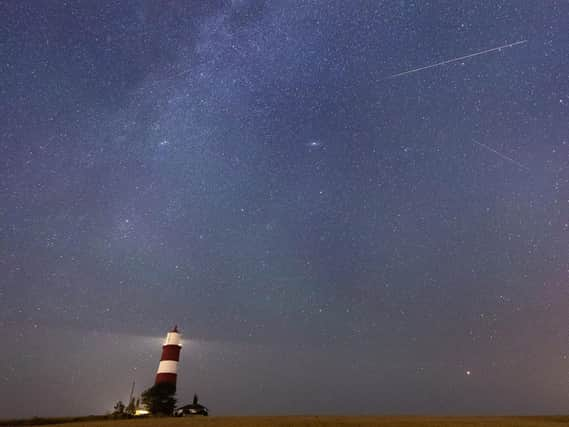Treat for stargazers as Earth passes through the tail of the 'most dangerous object known to humanity'


The Perseid meteor shower should peak on Thursday, four days after Sunday’s new moon, meaning there will be dark skies and should be easier to see.
Up to 150 meteors may be seen an hour throughout the night as the Earth passes through the tail of debris from a 20-mile sized chunk of rock and ice called Comet Swift-Tuttle.
Advertisement
Hide AdAdvertisement
Hide AdThe spectacular streaks seen in the sky are made by dust, smaller than grains of sand, as they burn up in the Earth’s atmosphere.
The comet’s reputation for danger owes to the fact that over the next 2000 years, there is roughly a one in a million chance of it colliding with Earth.
That would be curtains for humanity, said Prof Gibson from the EA Milne Centre for Astrophysics in Hull, who said: “For context, the energy of the collision would be 30 times greater than the one which wiped out the dinosaurs and 80 per cent of the species on Earth, 65m years ago.
"One in a million sounds like long odds, and it is, but again for context, that’s about the same odds as being struck by lightning - so, long odds, but not negligible!”
Advertisement
Hide AdAdvertisement
Hide AdA decade or so ago there were predictions that the comet would collide with the Earth in 2126, but that has since been ruled out.
“It is a close passage - but we are not going to hit it,” said Prof Gibson.
Although it carries a distant threat the Perseid meteor shower is also the most dependable of all meteor showers making an appearance every August, and building up to a peak of at least one every minute or so. And for stargazers they are also "nice and bright and quite easy to see".
The optimum time to see them streak across the sky mostly from north to south is around midnight,